Creating a nursery in a compact space can feel like solving an intricate puzzle, but it’s also an opportunity to exercise your creativity and design prowess. In today’s urban landscape, where living spaces are becoming increasingly condensed, many parents face the exhilarating challenge of transforming small rooms into magical havens for their little ones.
The key lies in understanding the juxtaposition of functionality and aesthetics while maximizing every square inch available. This comprehensive guide will walk you through innovative solutions that not only make the most of your limited space but also create an enchanting environment for your baby to grow and thrive in.
From clever storage solutions to multifunctional furniture choices, these ideas will help you design a nursery that feels spacious, organized, and filled with love, regardless of its actual dimensions.
Tiny Nursery Ideas
Let’s explore how to turn spatial constraints into opportunities for creating a cozy, efficient, and beautiful nursery that both you and your baby will adore.
1. Vertical Storage Solutions
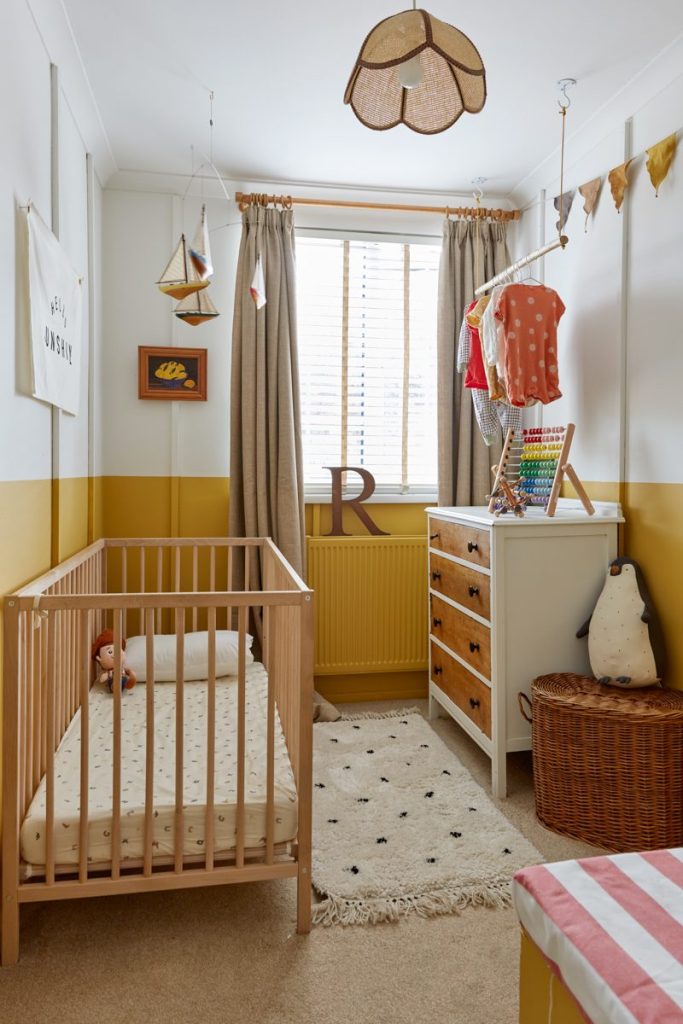
The art of utilizing vertical space in a tiny nursery can revolutionize your storage capabilities. Install floating shelves at varying heights to create an engaging visual display while maximizing storage potential. These shelves can house everything from books and toys to decorative items and essential supplies.
Consider incorporating a floor-to-ceiling bookcase or storage unit that takes advantage of the full wall height. This approach not only provides ample storage space but also draws the eye upward, creating an illusion of a larger room while keeping necessities within arm’s reach.
2. Multipurpose Furniture
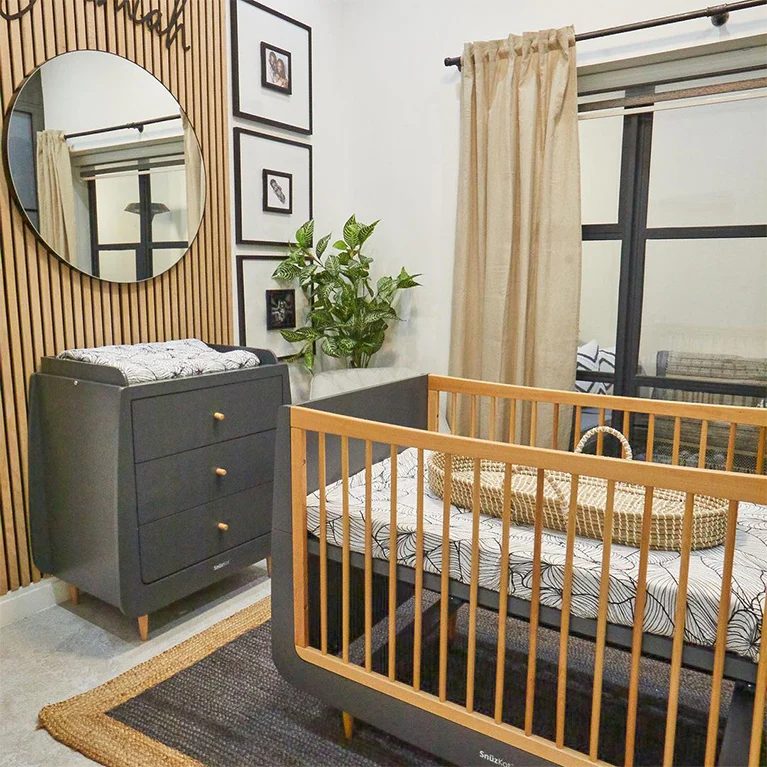
Investing in furniture pieces that serve multiple functions is crucial in a small nursery setting. A changing table that doubles as a dresser eliminates the need for separate pieces, while a crib with built-in storage drawers underneath maximizes floor space efficiency.
Look for pieces that can grow with your child, such as a convertible crib that transforms into a toddler bed, or a changing table that can later serve as a regular dresser. This forward-thinking approach not only saves space but also provides long-term value for your investment.
Related Guide: 14 Charming Boy Nursery Ideas
3. Wall-Mounted Organizers
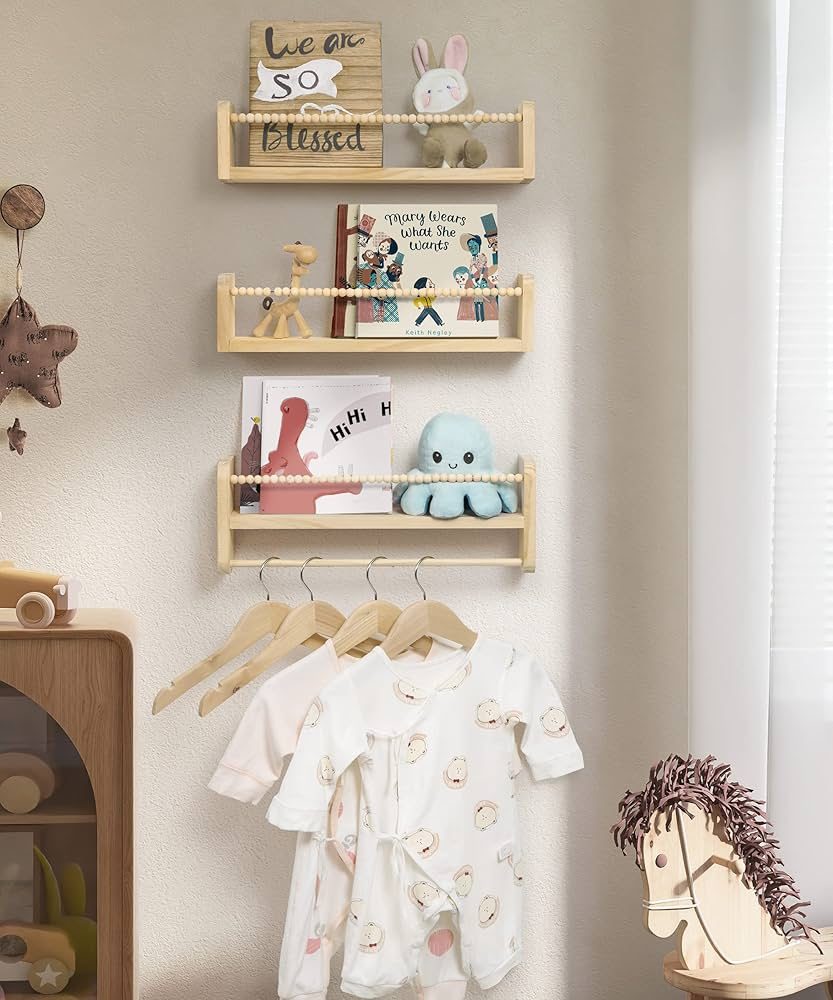
Wall-mounted storage solutions can transform dead wall space into functional storage areas. Installing pocket organizers, pegboards, or wall-mounted baskets creates accessible storage without consuming precious floor space.
These organizers can be customized to hold different items, from diapers and wipes to small toys and clothing accessories. Consider using clear organizers to easily locate items, or fabric ones that complement your nursery’s color scheme.
4. Corner Cribs

Utilizing corner space effectively can open up the center of the room for play and movement. A corner crib placement can create a cozy sleeping nook while maximizing the available floor space in the rest of the room.
This arrangement also allows for better traffic flow and creates natural divisions in the room for different activities. Add corner shelving units above the crib to further maximize the use of this often-overlooked space.
5. Door-Mounted Storage
The back of the nursery door represents valuable storage real estate in a small space. Install an over-the-door organizer with multiple pockets to store smaller items like socks, bibs, and accessories.
Consider adding hooks at different heights for hanging diaper bags, towels, or clothing. This simple addition can significantly increase your storage capacity without taking up any floor space.
6. Minimalist Color Scheme
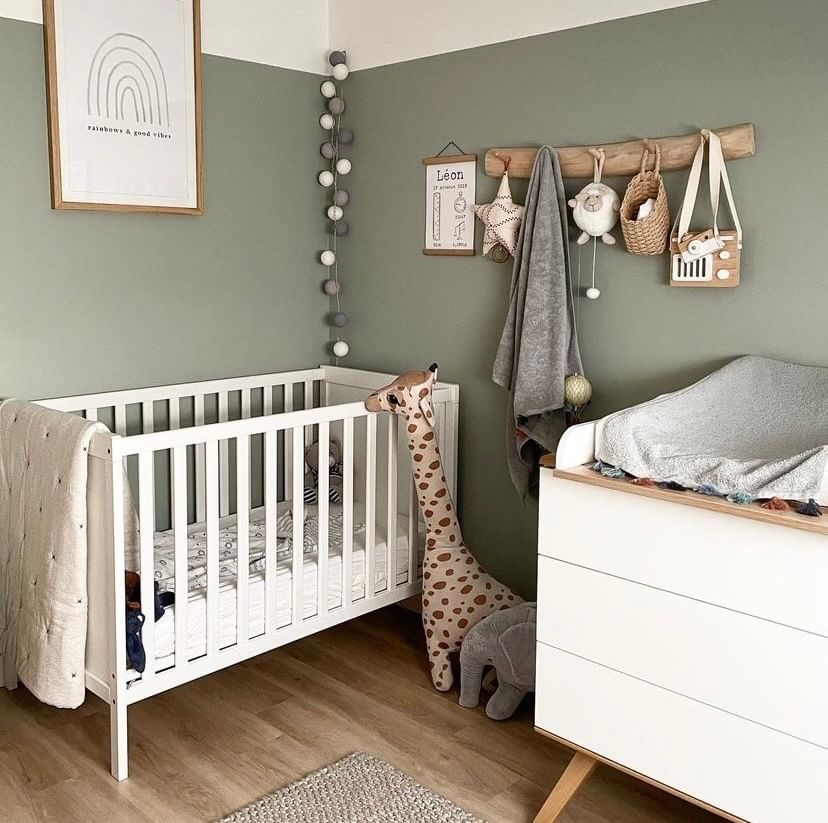
Choosing a light, cohesive color palette can make a tiny nursery feel more spacious and serene. Opt for soft, neutral tones as your base colors, and add subtle pops of color through accessories and decor items.
Using a monochromatic color scheme with varying shades and textures can create depth and interest without overwhelming the space. This approach also provides flexibility for changing accents as your child grows.
7. Space-Saving Window Treatments
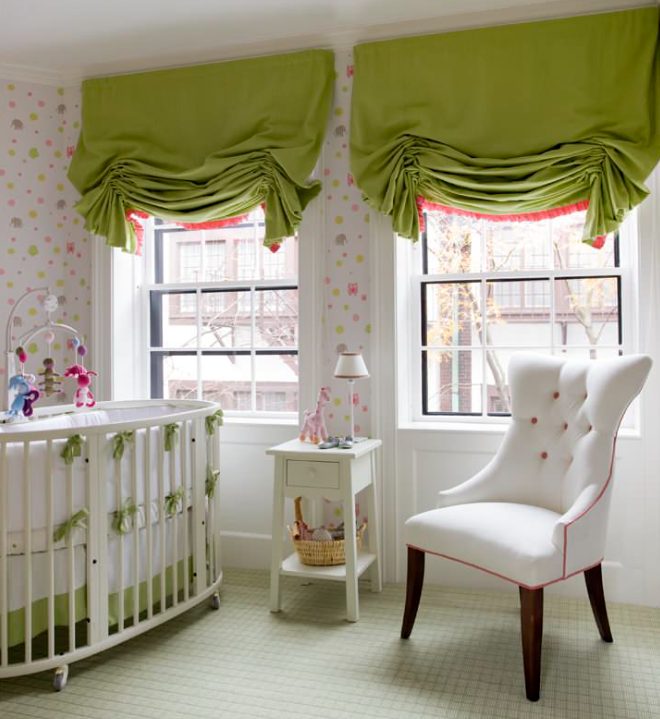
Select window treatments that maximize natural light while maintaining privacy. Roller blinds or Roman shades take up minimal space compared to traditional curtains and can be easily adjusted to control light levels.
Consider installing the window treatments close to the ceiling to create the illusion of higher windows and a more spacious room. Choose light-filtering options that protect your baby from harsh sunlight while keeping the room bright and airy.
8. Floating Changing Station
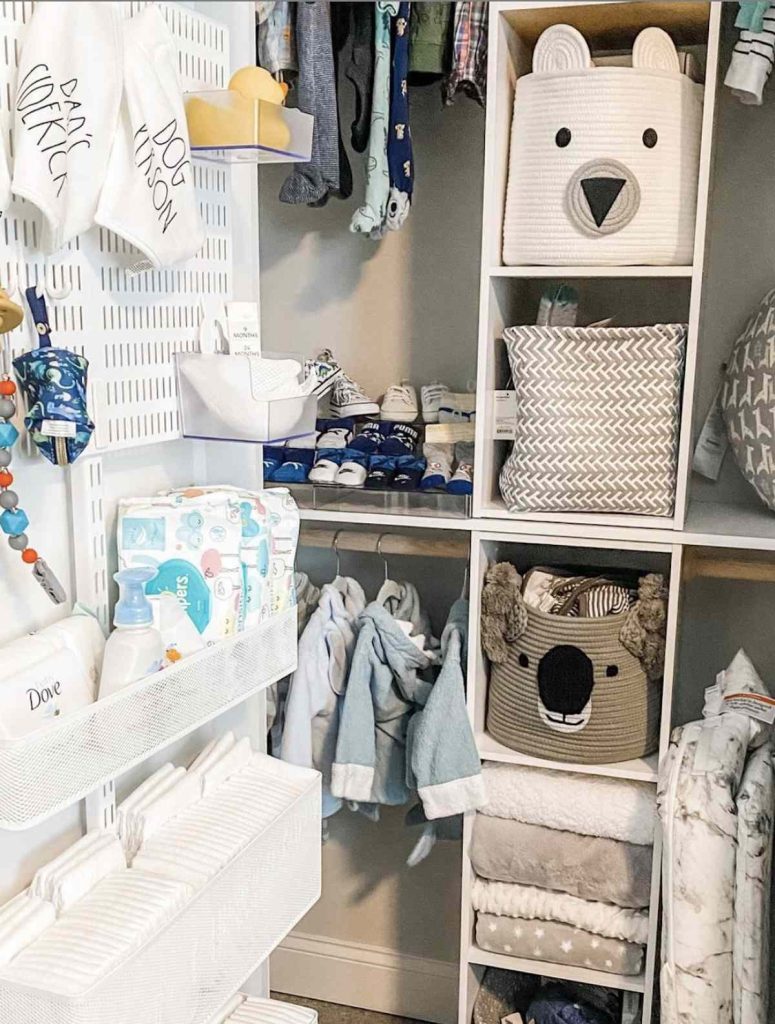
A wall-mounted folding changing table can be a game-changer in a small nursery. These innovative pieces can be folded up when not in use, instantly creating more floor space for other activities.
Ensure the changing station is installed at a comfortable height and pair it with wall-mounted storage for diapers and changing supplies. This setup provides all the functionality of a traditional changing table without the permanent footprint.
9. Mirror Placement
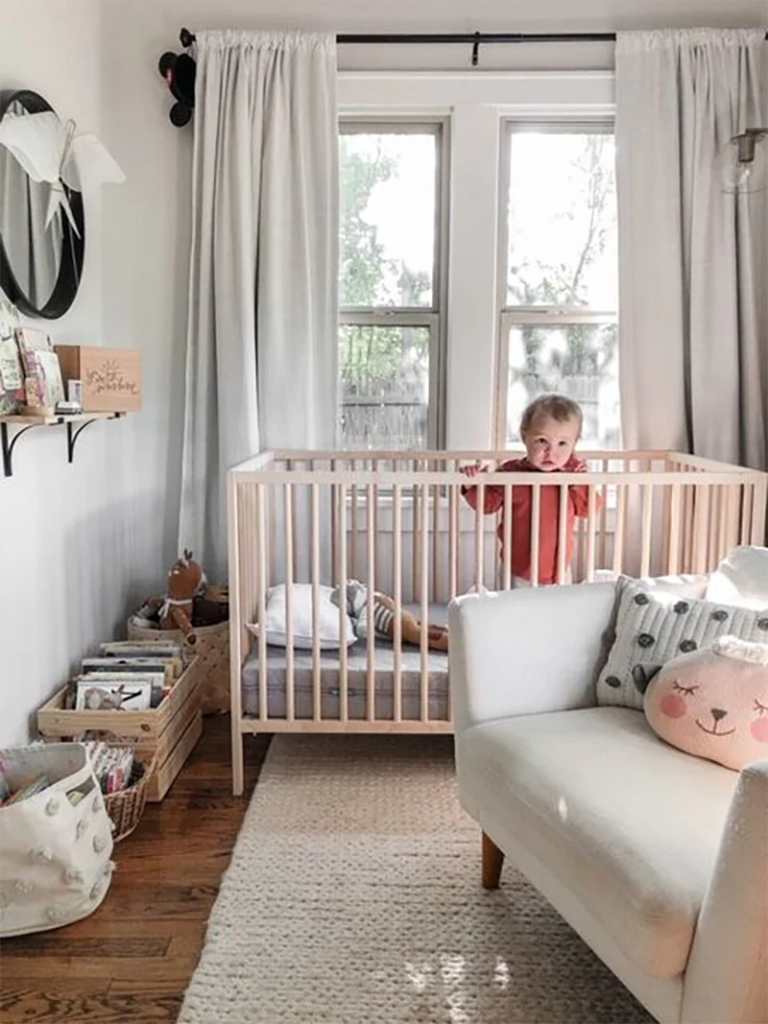
Strategic mirror placement can dramatically enhance the perception of space in a tiny nursery. Install a large mirror on one wall to reflect light and create the illusion of doubled space.
Consider safety by ensuring the mirror is securely mounted and positioned where it won’t create glare or disturb your baby’s sleep. Choose a frame style that complements your nursery’s theme while maintaining a clean, uncluttered look.
10. Dual-Purpose Play Area

Create a play space that can easily transform into other functional areas when needed. A soft play mat that can be rolled up and stored away, or floor cushions that double as seating for nursing, provide flexibility in your space usage.
Include storage solutions that can quickly hide toys and create a calm environment for sleep time. Consider using attractive baskets or bins that contribute to the room’s decor while providing practical storage.
Related Guide: 15 Stunning Baby Boy Nursery Room Ideas
11. Smart Lighting Solutions
Maximize space by choosing lighting fixtures that don’t require floor or surface space. Wall-mounted sconces or ceiling-mounted fixtures provide necessary illumination while keeping surfaces clear for other uses.
Install dimmer switches to create various lighting moods and ensure you have adequate task lighting for nighttime feedings and diaper changes without taking up valuable space with table lamps.
12. Compact Seating Options
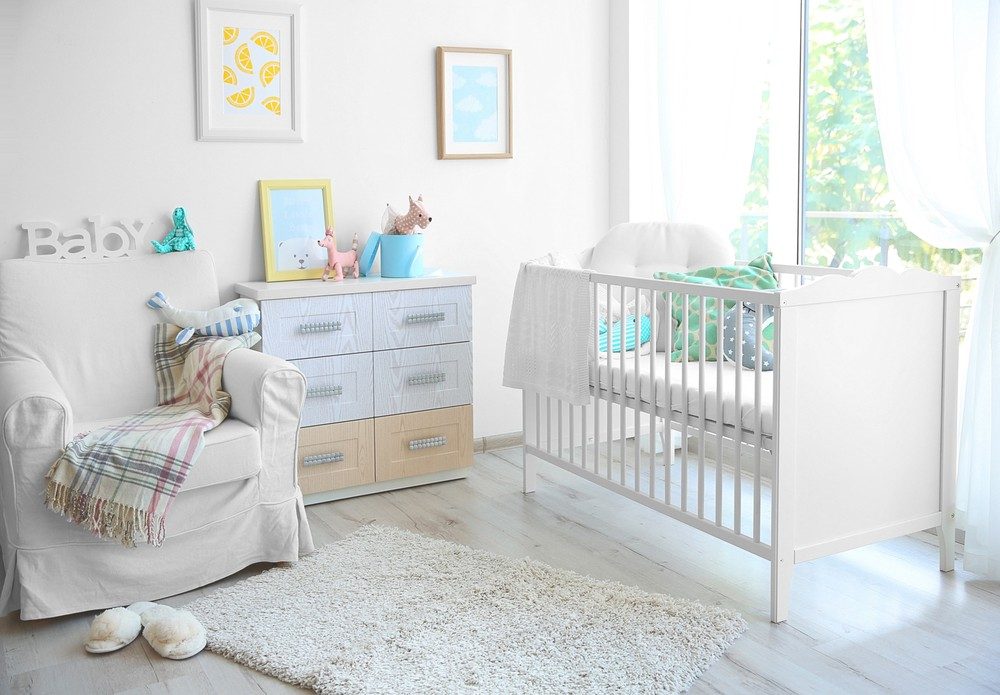
Select seating that can be easily moved or stored when not in use. A slim-profile glider or a comfortable floor cushion can provide a cozy spot for feeding and bonding without overwhelming the space.
Consider options like wall-mounted benches with storage underneath or ottomans that can serve as both seating and storage solutions.
13. Hidden Storage Solutions
Maximize every potential storage opportunity by thinking creatively about hidden spaces. Use bed skirts to conceal under-crib storage containers, or install toe-kick drawers underneath built-in furniture.
Look for opportunities to create storage within storage, such as using drawer organizers or small containers within larger storage solutions to maximize efficiency and organization.
Conclusion
Designing a tiny nursery requires thoughtful planning and creative solutions, but the results can be both beautiful and highly functional. By implementing these space-saving ideas and focusing on multipurpose elements, you can create a nurturing environment that serves all your baby’s needs without feeling cramped or cluttered.
Remember that successful small-space design is about making smart choices that maximize functionality while maintaining a peaceful atmosphere. With careful consideration of storage, furniture placement, and design elements, your tiny nursery can become a perfect sanctuary for your little one to grow and thrive.
The key is to remain flexible and adapt the space as your baby’s needs change, ensuring that your nursery continues to function efficiently while providing a comfortable and loving environment for years to come.

